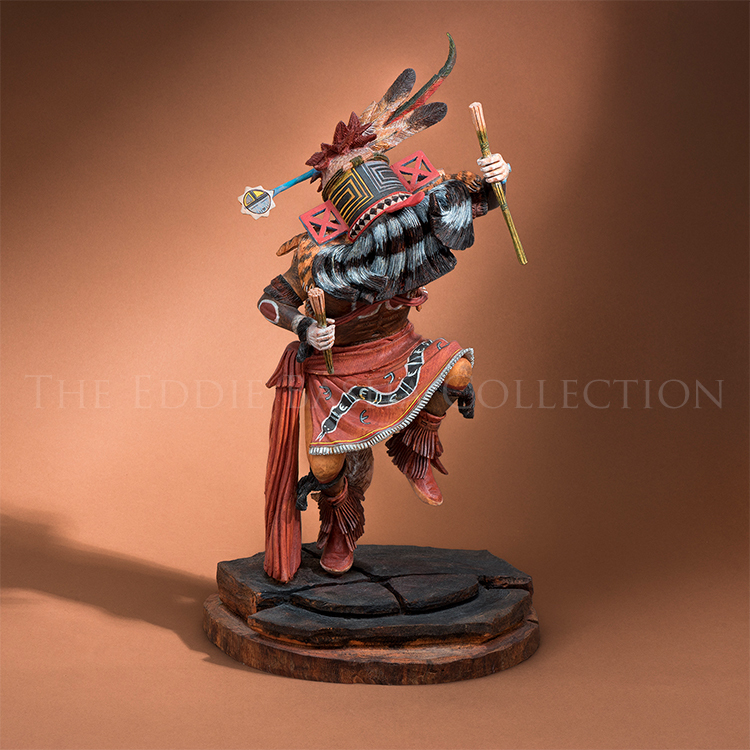Edward Tewanema
(b. 1966)

Hilili Hopi Katsina
Artist: Edward Tewanema (b. 1966)
Description: Cottonwood Tree Root | Dimensions: 18”h x 11”w x 9”dkatsina
Carver Ed Tewanema katsina figures appear to spring from their base. The action is in the details whether it be the sway of a dancer’s turquoise necklace, the fluidity of hair in motion, or mid-dance. Tewanema’s work has an innate sense of realism.
Though the Hilili originated in other pueblos as a witch of sort, it is now thought of as a guard or whipper and dances during the Hopi Spring Powamu ceremony as well as some of the other night dances. Hilili are symbols of long life, and/or water, which is essential to thriving crops.
 Cottonwood Tree Root | Dimensions: 18”h x 11”w x 9”d
Cottonwood Tree Root | Dimensions: 18”h x 11”w x 9”dCarver Ed Tewanema katsina figures appear to spring from their base. The action is in the details whether it be the sway of a dancer’s turquoise necklace, the fluidity of hair in motion, or mid-dance. Tewanema’s work has an innate sense of realism.
Though the Hilili originated in other pueblos as a witch of sort, it is now thought of as a guard or whipper and dances during the Hopi Spring Powamu ceremony as well as some of the other night dances. Hilili are symbols of long life, and/or water, which is essential to thriving crops.
Hilili Hopi Katsina
Artist: Edward Tewanema (b. 1966)
Description:
Cottonwood Tree Root | Dimensions: 18”h x 11”w x 9”d
Carver Ed Tewanema katsina figures appear to spring from their base. The action is in the details whether it be the sway of a dancer’s turquoise necklace, the fluidity of hair in motion, or mid-dance. Tewanema’s work has an innate sense of realism.
Though the Hilili originated in other pueblos as a witch of sort, it is now thought of as a guard or whipper and dances during the Hopi Spring Powamu ceremony as well as some of the other night dances. Hilili are symbols of long life, and/or water, which is essential to thriving crops.
katsinaCarver Ed Tewanema katsina figures appear to spring from their base. The action is in the details whether it be the sway of a dancer’s turquoise necklace, the fluidity of hair in motion, or mid-dance. Tewanema’s work has an innate sense of realism.
Though the Hilili originated in other pueblos as a witch of sort, it is now thought of as a guard or whipper and dances during the Hopi Spring Powamu ceremony as well as some of the other night dances. Hilili are symbols of long life, and/or water, which is essential to thriving crops.